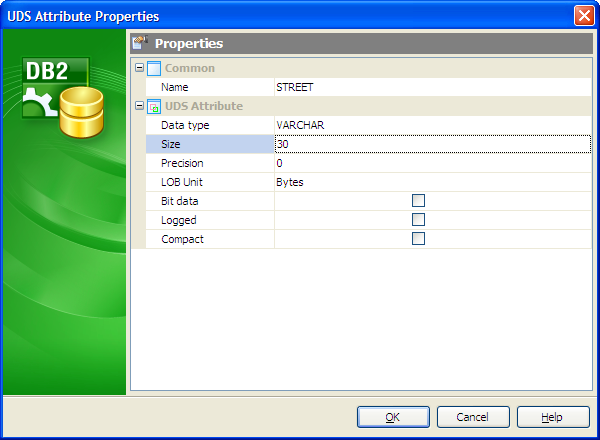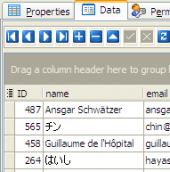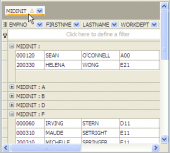DB2 Maestro online Help
| Prev | Return to chapter overview | Next |
UDS Attributes
Set UDS Attributes within the Properties window. Note, the attribute-name cannot be the same as any other attribute of this structured type or any supertype of this structured type.

Data type
The data type of the attribute. It is one of the standard data types, other than LONG VARCHAR, LONG VARGRAPHIC, XML, or a distinct type based on LONG VARCHAR or LONG VARGRAPHIC.
Use the Size edit box to define the length of the field value for integer, float, char and other data types and use Precision to define the precision of the field value, e.g. for float data type.
Precision
Precision
The first integer is the precision of the number; that is, the total number of digits; it may range from 1 to 31.
LOB Unit
Specifies the options associated with LOB types.
Bit data
Specifies that the contents of the column are to be treated as bit (binary) data. During data exchange with other systems, code
page conversions are not performed. Comparisons are done in binary, irrespective of the database collating sequence.
Logged
Specifies that changes made to the column are to be written to the log. The data in such columns is then recoverable with database utilities (such as RESTORE DATABASE).
Compact
Specifies that the values in the LOB column should take up minimal disk space (free any extra disk pages in the last group used by the LOB value), rather than leave any leftover space at the end of the LOB storage area that might facilitate subsequent append operations. Note that storing data in this way may cause a performance penalty in any append (length-increasing) operations on the column.
| Prev | Return to chapter overview | Next |





 Download
Download Buy
Buy
